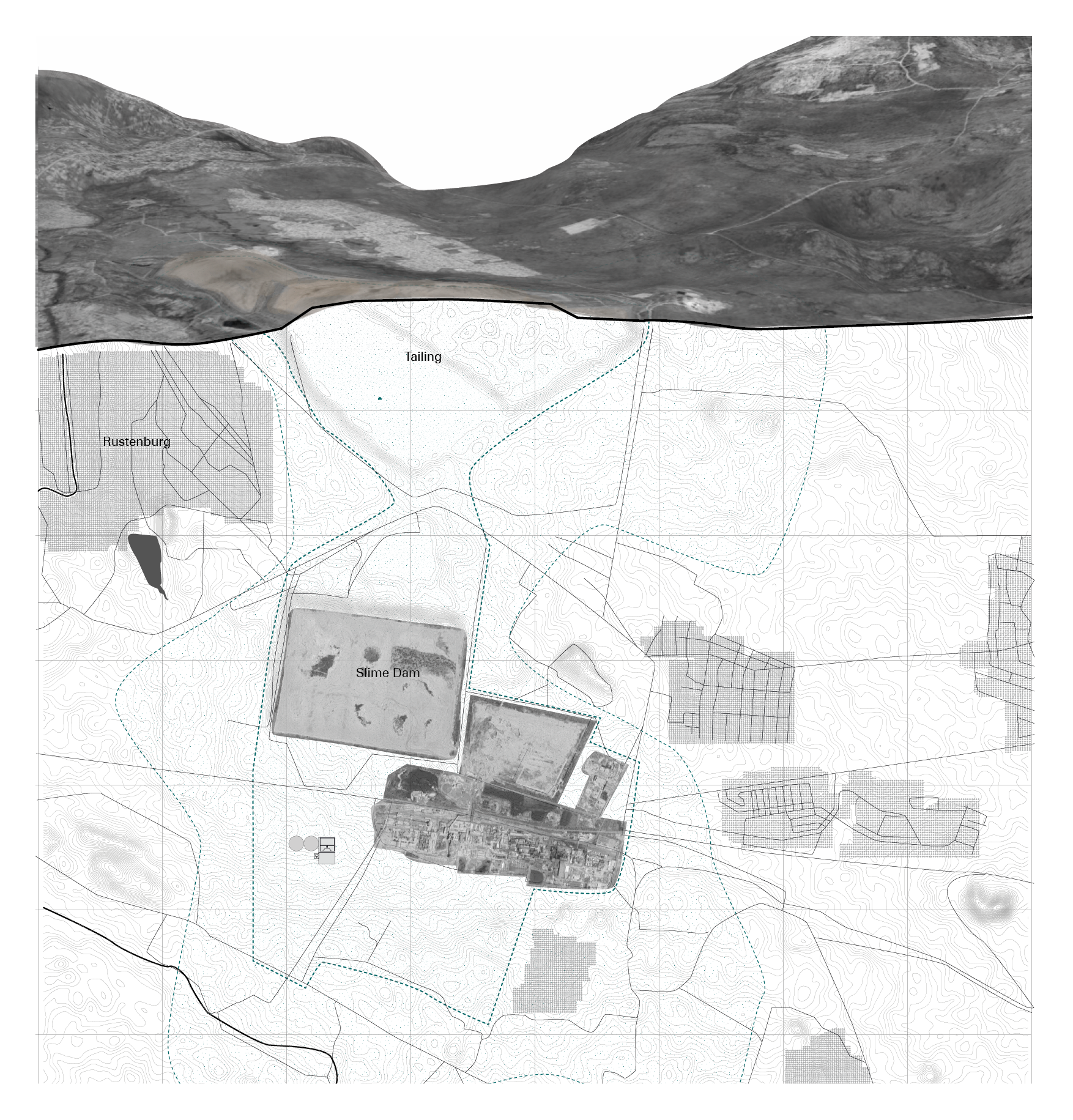Soil & Green

Higher concentrations of specific elements that threaten the function
of the human body are classified as pollutants.
The tailings resulting from the platinum mining activities are
composed of a mix of soil with elements such as Aluminium,
Manganese, Fluorine, Chromium, etc. And although isolated from
human contact, when the soil is dry, its particles are taken by the
wind, expanding the contamination into the air, water bodies, and
surroundings.
There are laws in place guarantying the responsibility of companies
and their products contamination, mining activities as profitable
operations should also implement the circularity of its byproduct
into the extraction process.
This research presents a pilot project for the South Africa Platinum
minings, which compensate for the accumulation of pollutants by
aggregating value to the soil.
Map depicts the Platinum mining Rustenburg region

Implementation
Phasing scheme maps
The implementation of the pilot project is divided into three categories: (1) soil remediation by phytotechnologies, (2) buffer reforestation, and (3) lignocellulosic biorefinery. These categories are then further developed into six phases according to the initial use of the land and its opportunities to integrate a circular design. A new area activates at each stage until the system reaches its maximum capacity.


Tailing as asset
Section view and calculations
The section on the top depicts the entire process, while the two below are the expanded scale of one part of the whole. The buffer of dense vegetation around the mining area supports the ongoing activities by decreasing the spread of air pollutants, followed by planting into abandoned tailing areas to contain and diminish the soil toxicity. Generated biomass will then feed the cellulosic biorefinery converting it into energy.



